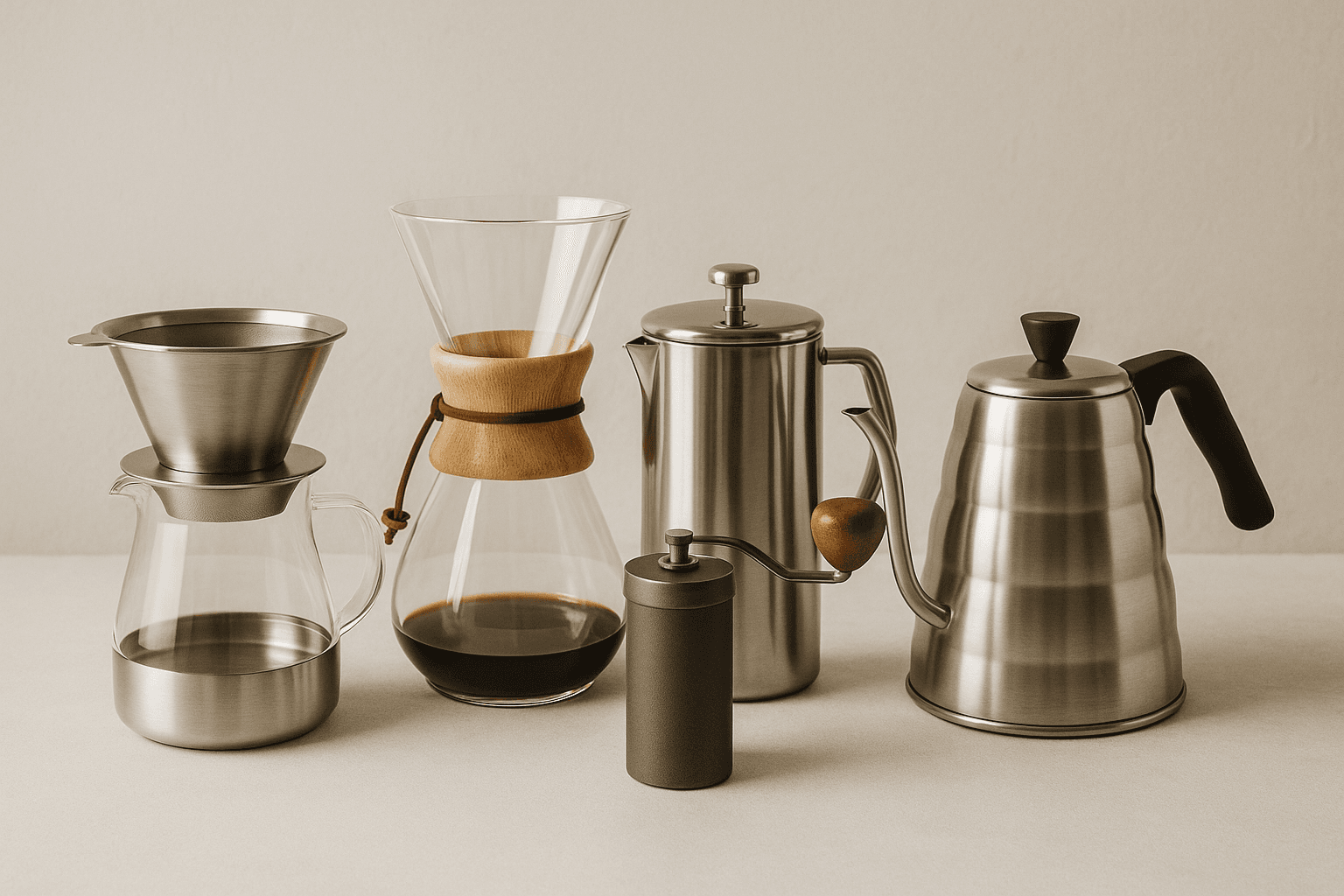Dubai, 23-07-2025 (QW) When we think about sustainability in coffee, we often start with the bean: its origin, farming practices, fair trade certifications, or carbon footprint. But rarely do we examine what happens after the beans arrive in our kitchens — specifically, the tools we use to brew them. Yet for anyone serious about sustainability, flavor, or health, one unavoidable question must be asked: Can we make coffee without plastic?
Plastic has become a staple in modern coffee gear — from water tanks in espresso machines to filter holders, internal linings, and grinder components. It’s cheap, versatile, and thermally efficient. But it’s also problematic. When exposed to heat — especially boiling water — plastics can leach micro-particles or hormone-disrupting chemicals like BPA, even in certified “BPA-free” products. For a beverage as complex, delicate, and cultural as coffee, this represents a blind spot.
The issue isn’t just health. Plastic components often degrade faster than their metal or glass counterparts, leading to premature equipment failure and unnecessary waste — a contradiction for consumers who might otherwise invest in sustainable beans or packaging.
To be fair, plastic has its place. In pour-over devices like the Hario V60, for instance, plastic provides consistent heat retention and durability — important variables in extracting nuanced flavors from high-grown Arabica. Automatic drip brewers use plastic because it’s lightweight and easier to mold into precision parts for water flow and steam management.
But the question isn’t whether plastic is useful. It’s whether it’s necessary — and whether there are better alternatives in an era of rising environmental awareness.
For the determined coffee drinker, there is a growing ecosystem of plastic-free or minimal-plastic equipment. The Italian Moka pot, the Chemex, and the stainless steel French press are classic examples of longevity, durability, and simplicity.
Recent innovations also offer new hope. The Fellow Stagg XF set marries aesthetics with science in a double-walled steel design. The Weber Workshops BIRD, although niche and expensive, showcases how zero-bypass brewing can be both elegant and plastic-free. Manual grinders like the Timemore C2S and the high-end Zerno Z1 have demonstrated that precision doesn’t require plastic hoppers.
Yet, there remains one major obstacle: the automatic drip coffee maker. Despite growing demand, no fully plastic-free model currently exists in the consumer market. Even the elegant Ratio Eight Series, which comes close, still relies on a Tritan plastic water tank. The industry’s reluctance to move toward full metal or glass alternatives is as much about economics as engineering.
Surprisingly, espresso machines offer more promise. Brands like La Pavoni produce lever machines with entirely metal water paths. However, these require manual pressure — an art that can intimidate the average user. Even high-end machines in the $4,000+ range can contain hidden plastic tubing, usually in the reservoir or pump system.
The most practical compromise might be machines like the Gaggia Classic Evo Pro, which minimizes plastic use to a cold-water tank and a couple of silicone tubes — a step in the right direction, but still not perfect.
Kettles pose a stealthy challenge. Many boast stainless-steel bodies but conceal plastic under the lid or at the spout joint. The Fellow Stagg EKG Pro, by contrast, limits internal non-metal materials to a silicone gasket.
As for grinders, the consensus is clear: if you want zero plastic, manual is the way to go. The moment electricity enters the equation, so too does molded plastic — at least until ultra-premium alternatives like the Zerno Z1 become more accessible.
Why hasn’t the coffee gear industry followed the same sustainability curve as the coffee farming sector? Part of it is consumer expectation. We demand affordability, speed, and sleek aesthetics — which plastic provides. But as awareness grows, the pressure is building for manufacturers to rethink design. Coffee lovers are not just drinkers anymore — they’re informed participants in a global conversation about waste, health, and ethics.
-
Audit your current gear. Is your kettle truly plastic-free on the inside? Are your filters bleached or reusable?
-
Shift to manual. Manual pour-over or French press options often use fewer plastic parts and last longer.
-
Invest in heirloom gear. A high-quality grinder or kettle made of all-metal components will serve you for decades.
-
Demand transparency. Contact manufacturers and ask what materials they use in parts that touch water. The more we ask, the more they’ll have to answer.
As we race to solve big sustainability challenges in the coffee supply chain, we must not ignore what happens at the end of the line: the brew itself. The path to a plastic-free cup is not just a matter of environmental stewardship — it’s about reclaiming quality, tradition, and trust. In coffee, as in life, the little things matter.


